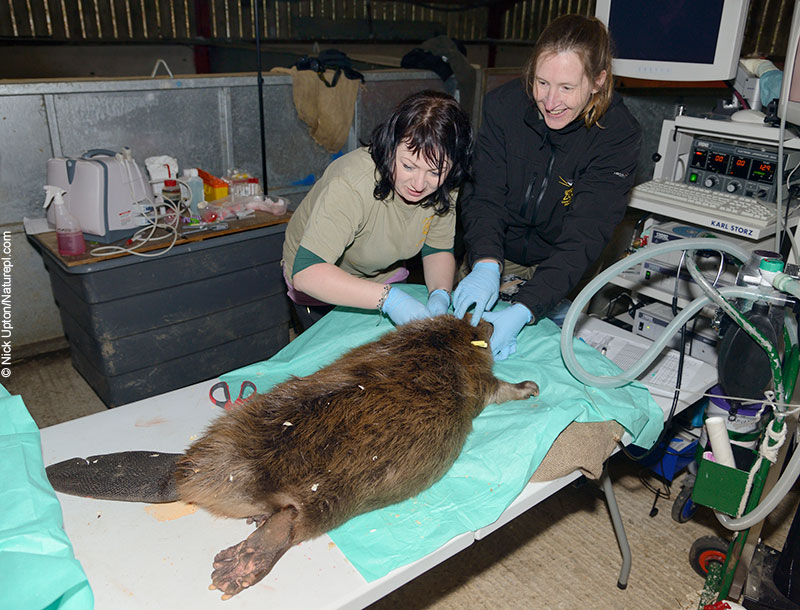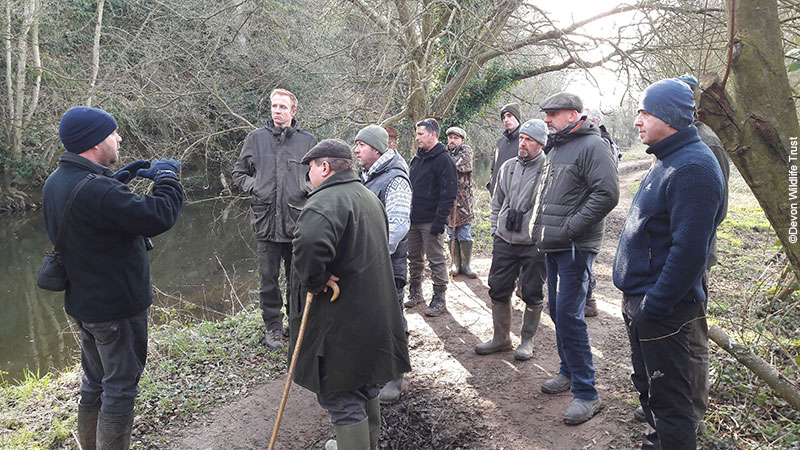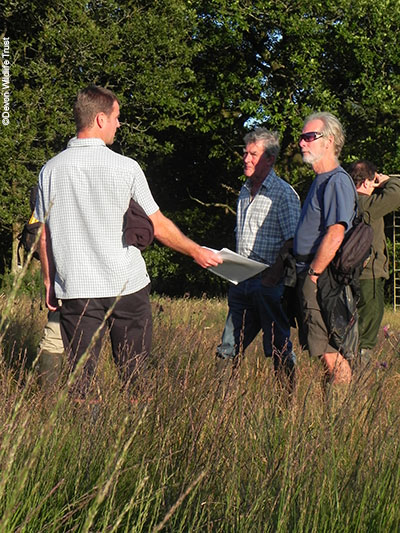Non-Profit Spotlight: Devon Wildlife Trust
By Amy Nelson

“We started to see a groundswell of public support for the idea,” says Burgess. “And it became apparent that Devon would likely be in the spotlight.” Compared to other regions of England that are more highly constrained by development and their inherent or altered ecological context, Devon presents advantages for beaver reintroduction. A pastoral landscape with a mild, wet climate, Devon has lower population density. It also hosts remnant Culm grassland systems, which depend on poorly drained acidic and clay soils that retain water and stay too wet for modern farming practices. Maintained by grazing and occasional managed burning, Culm grasslands support a unique community of plants and animals, including a highly endangered species of butterfly, the marsh fritillary. More than half of the original grassland extent has been lost since the 1980s, mostly as land was drained to allow for agricultural improvement. Given this context, Burgess and others felt that beaver could likely serve as a natural mechanism to restore the hydrology and thereby the former Culm grasslands through their coppicing activity.

By 2011, the Wildlife Trust had constructed a three-hectare fenced area where beaver could be released and studied to understand their capacity as landscape engineers. This project was a first step along a road to reintroduction, a chance to examine the efficacy of beaver as a wet grassland management tool, introduce stakeholders to a concrete example of their effects, and build popular support for reintroduction efforts. The results have been promising.
Devon Wildlife Trust was merrily proceeding with the enclosure experiment when there was an unexpected development that offered an opportunity to fast-forward the overarching program. They heard and confirmed reports that beaver of unknown origin were busily building dams outside the enclosure, along the nearby River Otter. Though their provenance remains a mystery, they are thought to be animals from a private collection that had either escaped or were released into the area.
“Hearing about those introduced beaver gave us an amazing opportunity to crack on with the process of understanding the public sentiment and regulatory framework for beaver reintroduction,” says Burgess. The mystery beavers posed an interesting problem: because beaver can carry a potentially damaging tapeworm (Echinocochus multilchularis), they needed to be tested.

Once they were captured for testing, their legal status posted specific challenges. Captive beavers, which they now were, are not allowed to be released into the wild. Even where legal, such releases are carefully managed according to established guidelines from the IUCN. So once the beavers were given a clean bill of health, DWT saw their situation as an opportunity to generate public awareness and a chance to pioneer the process of securing legal authorization for their release.
 DWT initiated a massive outreach campaign that built on the relationships they had developed while securing permission and buy-in for the enclosure experiment. DWT knocked on doors of local landowners and farmers, appeared at public meetings, sought opportunities to speak to community groups, and began to untangle the concerns of stakeholders and other parties who resisted the notion. Eventually the regulators from Natural England Department for Environment, Food, and Rural Affairs, who worked closely with DWT and other experts from the start, decided that the mystery beavers could be rereleased as an independent trial, lasting five years. The solution required DWT to reframe its approach.
DWT initiated a massive outreach campaign that built on the relationships they had developed while securing permission and buy-in for the enclosure experiment. DWT knocked on doors of local landowners and farmers, appeared at public meetings, sought opportunities to speak to community groups, and began to untangle the concerns of stakeholders and other parties who resisted the notion. Eventually the regulators from Natural England Department for Environment, Food, and Rural Affairs, who worked closely with DWT and other experts from the start, decided that the mystery beavers could be rereleased as an independent trial, lasting five years. The solution required DWT to reframe its approach.
“We started out campaigning for the re-release, but that role has shifted in that we are sharing responsibility for supervising an independent research study,” says Burgess. “We have permission to add additional animals. After five years, we will face a decision about how to proceed.”
This facet has important implications for the team’s decisions today, which is roughly the midpoint of the trail period. A tiny population of beaver, left to breed amongst themselves for even five years, will undergo inbreeding and have a very restricted genetic diversity. Would that mean that if the trial is successful, a thoughtful reintroduction program should not begin with the population already living in the wild? The nine beavers found today in the River Otter are believed to have a common parent. In England, there is no studbook for the beavers. Most animals in England today have come from areas in Bavaria, Germany, and Norway.
“Genetic diversity is something we are trying, retrospectively, to improve,” says Burgess. Another challenge that has to be worked out centers on how the animals will be managed if they cause trouble for humans or infrastructure. DEFRA must decide how to respond if the beaver build dams that increase local flood risk, for example. The answers are starting to become clearer through the listening sessions and conversations occurring today. The hard data on the water quality and quantity changes are captured by the research enclosure, but the situation of the mystery beavers has quickly advanced everyone’s understanding of potential socioeconomic impacts, such as changes to land immediately adjacent to the river that would prevent its use for agriculture. Most social considerations, though, are rapidly becoming less complex.


“The nearby communities are amazingly supportive,” says Burgess. Neighbors describe their enthusiasm for the program, and their sense that they are proud to see the beavers coming back to the landscape. This has been a welcome insight to Burgess, who is resolutely optimistic about the future of the program. “England has so little natural vegetation and so few unaltered ecosystems. We now have a chance to enable beavers to breathe new life into our waterways and provide them with more space to behave in much more dynamic, complex, and ecologically beneficial ways – and whilst doing so reduce flood risk to communities downstream and improve the quality of water.”
The River Otter Beaver Trial is led by Devon Wildlife Trust working in partnership with The University of Exeter, the Derek Gow Consultancy, and Clinton Devon Estates. Expert independent advice is also provided by the Royal Zoological Society of Scotland, Professor John Gurnell, and Gerhard Schwab, an international beaver expert based in Bavaria. Their funding support, however, comes entirely from individuals and foundations. Click here for more info. [hyperlink https://www.devonwildlifetrust.org/make-a-donation]
